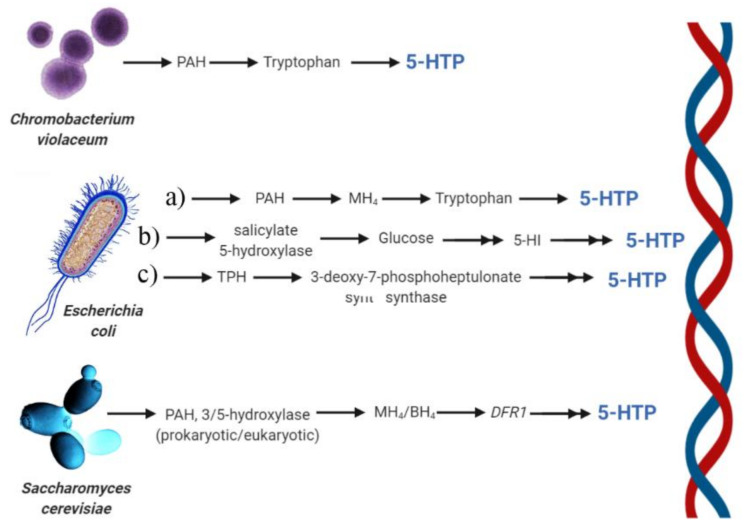Figure 9.
Summary of heterologous production of 5-HTP. Chromobacterium violaceum, with the first use of PAH for tryptophan hydroxylation to 5-HTP. Escherichia coli, with a) utilization of MH4 instead of BH4 as the native pterin coenzyme for 5-HTP synthesis, b) the biosynthesis of 5-HTP with the use of a novel salicylate 5-hydroxylase that uses glucose as the substrate for the production of the non-natural substrate anthranilate to 5-hydroxyanthranilate (5-HI), c) substitution of the promoter of aroHfbr gene encoding 3-deoxy-7-phosphoheptulonate synthase to feed the biosynthetic pathway of tryptophan production. The use of yeasts with the heterologous expression of either a prokaryotic PAH or eukaryotic tryptophan 3/5-hydroxylase, together with enhanced synthesis of the two cofactors MH4 or BH4; the native Saccharomyces cerevisiae gene, DFR1, which encodes dihydrofolate reductase to catalyze tetrahydrofolate, plays a pivotal role in 5-HTP synthesis by regenerating MH4. Created with BioRender.com.

